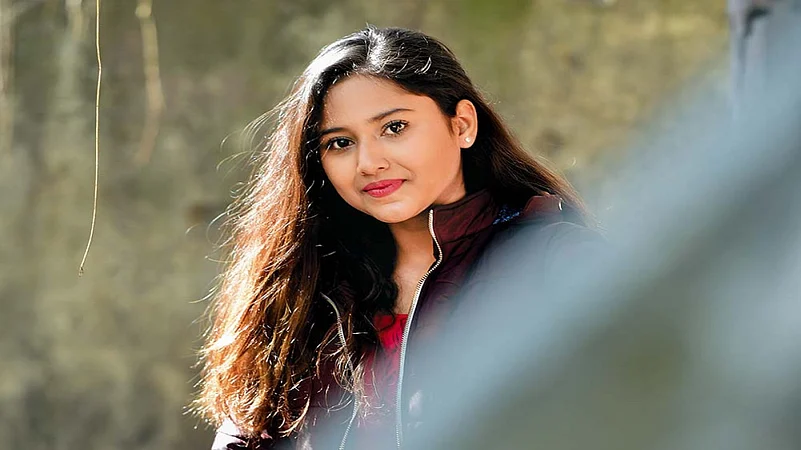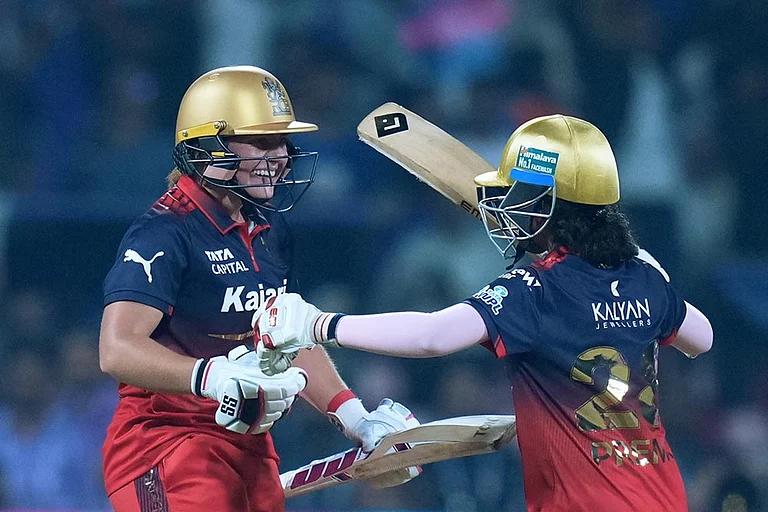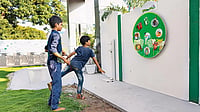- 1.5 lakh There are about these many thalassaemic children in India. Around 15,000 are born with the disease each year, but most don't survive
- 1 lakh+ Estimated number of blood cancer patients in India, which ranks third after the US and China
***
There's an enduring mystique about stem cells. One that relates to the sense of an utterly simple functionality—what they do, which is to say, they are a factory that can produce all the cells and tissues the body requires. The other is of mind-boggling complication—how they do it; which is, the different kinds of blood, muscle and skin cells all stemming from a group of basic cells we are born with and which keep us going...repairing, replenishing, regenerating. These are the adult stem cells. The master keys they use to make all these other specialised tissues have been the subject of intense research for decades. Remember Dolly the sheep—the first mammal to be cloned nearly 25 years ago from an adult stem cell.
Not long after that, scientists figured out how to re-programme an adult stem cell to generate what’s called an induced-pluripotent stem cell—a cell that’s made to go back into its embryonic state, pressing the rewind button as it were by inserting genetic material into it. From there, it can be used grow out into any type of cell. For years, these have held out the promise of a cure for many diseases—there are advanced trials going on in various centres in the world, even if everyday use in hospitals as clinical therapy is still quite a way off.
ALSO READ: Saved By Your Stem Cell
But let’s step back from the frontiers of science to something more commonplace. A stem cell therapy that has been so far the most well-established cure we’ve known—the bone marrow transplant. It has been in use for decades now and is even today the life-saver for blood disorders like thalassaemia major, sickle cell anaemia or cancers like acute myeloid leukaemia. Bone marrow is the source of the stem cells that produce red and white blood cells and platelets—called haematopoietic stem cells (HSC). The Indian centres which began working on this treatment back in the 1980s are today among the best in the world, says Dr Suresh H. Advani, the oncologist who carried out the country’s first bone marrow transplant in 1983. “In 40 years, it has expanded exponentially. We are really in the forefront of transplants...the results are equal whether you do it here or abroad,” says Advani. More than 110 transplant centres are registered with the Indian Society for Blood and Marrow Transplantation (ISBMT) registry and its data shows that the graph has been climbing steeply—between 2013 and 2019, the number of HSC transplants in India had doubled. As many as 2,432 transplants were carried out in 2019, up from 128 in 1999. Yet, these numbers are grossly inadequate compared with the need. The HSC transplant rate per 10 million people in India is the lowest among the world’s top economies.

Munna Yadav, 15, has thalassaemia—diagnosed when he was six months old. He is from Giridih, Jharkhand, and his father Jogeswar Yadav is a mason. Munna visits Calcutta twice a month for blood transfusion, which keeps him alive. The Thalassemic Guardians Association helps the family with the transfusion that costs around Rs 200 for each session, much cheaper than the Rs 5,000-plus charged in any Giridih facility.
Look at thalassaemia major, for perspective. India is estimated to have the largest number of children in the world with this disorder, where a gene mutation leads to life-threatening anaemia—about 1 to 1.5 lakh children. Around 10,000 to 15,000 are born with this disease every year. But less than a thousand HSC transplants were done for thalassaemia between 2012-2016, reports say. These are allogeneic transplants, meaning the stem cells come from a donor. When bone marrow transplantation isn’t accessible, these children have to fall back on blood transfusions. Like four-year-old Reema Sharma, who doesn’t know why she visits a hospital with her mother every month.
She hates going there but there’s the lure of chocolates and pizza. On every visit, a doctor asks her to lie on the bed and inserts a needle into her arm. That’s to verify the blood compatibility. Then the needle goes in once again and she is bed-ridden for the next four hours. The process takes almost the whole day. “It is difficult to tell this little heart that she is suffering from thalassemia major and this is the only way we can save her life,” her mother Nikita Sharma, 32, tells Outlook. When she’s older, the frequency of transfusions will increase to twice or three times a month. That’s apart from regular medication to remove iron that gets deposited in the liver, heart and pancreas due to blood transfusion. The only permanent cure currently is a HSC transplant.
Finding a HSC donor is a problem worldwide—and in India too. “In fact, the problem is much more acute abroad. Here at least we have big families,” says Suresh Advani. But, as he points out, not everybody can find a matching donor within their families. So here’s the situation: the number of total registered unrelated donors in India is woefully low at about 5.5 lakh, and hence the odds of finding a donor ranges from 1:10,000 upwards. The worldwide unrelated marrow donor registry counts more than 30 million donors.
But there have been pitfalls even when a match was found—people agreeing to donate and then backing out—sometimes with tragic consequences. In 2014, doctors at a centre in Ludhiana had started chemo on seven-year-old Harleen Kaur to prepare for the transplant but her donor copped out at the last moment, leading to her death. “No other country in the world has documented such ignominy,” says Dr Alok Srivastava, head of the Centre for Stem Cell Research at Christian Medical College, Vellore.

Thalassaemic children (from above) Simran Bhalla with Priyanka Singh, Rahul Wahi, and Deepak Singh in Delhi.
This calls for some detail on the actual process of stem cell donation. In an allogeneic HSC transplant, the cells are extracted from a healthy person’s blood and transplanted into the patient. But how do you find a donor? A cell marker called the Human Leukocyte Antigen (HLA) obtained via a cheek swab comes in here. These are proteins involved in the body’s immune system. Since each person has unique markers, HLA typing can point to whether the tissues from two individuals match—this is essential, because the immune system could put up a fight against a mismatched HLA. The success rate of a transplant in a thalassaemia patient with a 100 per cent HLA-matched donor can be greater than 90 per cent if the patient is in good condition with no major liver related complications. The long-term outcomes have generally been improving over the years but vary across diseases—ranging from 30 to 95 per cent, depending on the disease and the pre-transplant condition of the patient.
There are half-a-dozen HLA registries in India, which often organise camps to mobilise people for donation. “Because of the lack of awareness about the topic and numerous myths and misconceptions existing in India, people don’t register as potential blood stem cell donors,” says Patrick Paul, CEO of DKMS-BMST Organisation, a Germany-headquartered stem cell registry in India. Typically, donors are apprehensive about the pre and post-donation health complication and side effects—in many cases, they cave into family pressure and refuse to donate. Bone marrow is usually taken from the hip bone (ilium). A few days prior to the donation, the donor is given an injection that releases bone marrow into the blood stream and the procedure of extracting blood takes a few hours. Since stem cell donation is voluntary, donors can’t be forced, says Shobha Tuli, vice president, Thalassaemia International Federation. “Many people think they can donate later but the patient may not have that much time. If a donor backs out, it’s effectively killing the possibility of a patient having a second chance at life.”
“To save a life, an individual needs to donate only 300 ml of blood containing stem cells which we all have. You need nothing but human kindness for that,” says Dr Rahul Bhargava, director and head of haematology and bone marrow transplant at Fortis Memorial Research Institute, Gurgaon.

Mohit Sirohi of Kurukshetra, Haryana, is a donor. The 23-year-old gave his stem cells to a girl in Chennai in 2019.
Typically, when a HLA registry doesn’t get a match in its database, it expands its search to the World Marrow Donor database, a world body. Ethnicity, explains Paul, plays a major role here. “India being a diverse ethnic population, it becomes necessary for more Indians to register so that more Indian patients get a chance to find their stem cell match.” Agrees Shruti Kakkar, who works with thalassaemia patients at Dayanand Medical College, Ludhiana, “The more people give their stem cell samples and become a donor, the possibility of finding a match increases accordingly.”
Suresh Advani believes people would be willing if the outreach was more active and awareness greater. “You go out and ask people what is HLA? Nobody will know because nobody talks about it,” he says. But it also requires resources, he points out. The Ministry of Health and Family Welfare has been talking about setting up a national stem cell donors registry, but that project has been in the pipeline for years. Narinder Kumar Mehra, former dean of AIIMS Delhi, who has worked with the health ministry for the last five years towards setting up a national donor registry, is disappointed with the bureaucratic delays. Still, he’s optimistic. “The health ministry is positive about setting up the IMDR and I am hopeful it will happen soon.”
Experts say that will help streamline the process. “Once it is in place, all the data from local registries will be shared with the national registry, which will further share it with the global data bank,” says Paul of DKMS. “There are about half-a-dozen registries in India but they don’t work in close coordination. In fact, they act as rivals,” says an employee at one of the private registries.
Where they find a matched HLA donor, registries charge about Rs 8-10 lakh, which pushes the total cost of the transplant to over Rs 30 lakh. Typically, the costs of a matched-related transplant (where the donor is a family member) are much lower.
“They should charge the minimum possible so that more patients can afford the treatment,” says Tuli. But there are operative costs involved here, points out DATRI, India’s biggest donor registry. Out of thousands of registrations of fresh donors, one gets matched with a patient—it’s the registry that bears the cost of the HLA typing and complete health tests of a donor. “There is a cost involved in ensuring the fitness of the donor, confirmatory HLA typing and testing the donor for various potential infections , administration of a drug for four to five days prior to donation of stem cells, administrative cost and so on,” says Srinivasan Periathiruvadi, co-founder and chairman of Jeevan Stem Cell Foundation, another donor registry. “However, all taken into account, this cannot exceed Rs 3 to 5 lakh in India,” he says.
As India’s largest registry, DATRI, points out, the cost of recruiting 10,000 donors—even with its reduced rate of Rs 1,800 per HLA typing—will run into Rs 1.8 crore.
“Counselling a donor is another big challenge as we have to hire experts to convince the donor for donation. Due to the language barrier, cultural differences and conservative mindsets, donors need to be persuaded through counselling to come forward and donate,” points out a doctor working with one of the registries.
Haplo-identical transplants are being carried out as well in some centres—this refers to a half-matched transplant which could be found more easily among first-degree family members. But it’s also been controversial—a petition from a group of 10 parents arguing that the procedure is still in clinical trials, and therefore not approved as a standard-of-care, is currently in the Supreme Court. These parents had lost their children following haplo-identical HSC transplants. The apex court has asked Medical Council of India to respond.
As experts point out, lack of donors is only one of the bottlenecks. “There are any number of people with donors who are also not able to get the benefit of transplantation,” says Srivastava. “So the situation in India is much more complicated than that.” Primarily, these relate to socio-economic background of patients and access to good HSC transplant centres. Most of the payment for these transplants is out-of-pocket. A recent paper analysing the access to HSC transplants cited studies from two top centres in India which suggested that only 20-30 per cent of patients diagnosed with aplastic anaemia—in which the body stops producing blood cells—received the standard-of-care therapies, which are HSC transplant or immunosuppressive drugs. Bone marrow transplants are also part of the treatment options for acute myeloid leukaemia, one of the most common leukaemia in adults. Here too, studies note, high costs have prevented patients from getting treatment. Indeed, many state governments are supporting treatment costs—HSC transplantation is among the one-time curative treatments eligible for financial support of up to Rs 15 lakh under the Rashtriya Arogya Nidhi.
Suresh Advani points out that the top Indian treatment centres have actually brought down their costs over the years. “It is a very complicated procedure but still it is the least expensive in India. Wherever else it is cheaper, they are supported by the government, so it is subsidised.” Srivastava agrees: “The cost of bone marrow transplant can be brought down only to a point as it is a complex and prolonged treatment. Like everything else in healthcare in India, it finally depends on the costing and charging policies of the particular hospital system.” The solution, as experts suggest, points to increasing the number of transplant centres, improving minimum standards and helping patients with financial support. As Srivastava puts it, “The bigger issue is, bone marrow transplants are being done in the world for more than 60 years and India is among those countries where penetration is extremely low.”
***
Who can register as a donor
A healthy, adult Indian citizen
Age between 18 and 50 years
Should weigh above 50 kg
Should not be registered with a registry already
Five steps to become a donor
1. Go online to the website of any of the registries. For instance, you will get a form on datri.org/join or https://www.dkms-bmst.org/en/register-now.
2. Fill out the form with details like name, date of birth, address etc. You will get a confirmation/verification call and the donation process will be explained to you.
3. The registry will courier you a swab kit.
4. You have to swab your inner cheeks and send the sample to the registry.
5. The registry will send the swab sample to its lab for HLA typing. It takes 45 days to get the result, which is then added into a database.
Covid Downshot
The pandemic-induced social distancing and lockdowns have brought donor registration, donation and stem cell transplant to a halt in India. Patrick Paul of DKMS BMST says registrations couldn’t be conducted because COVID-19 has forced people indoors. Claudia Rutt of DATRI agrees, saying it is hard to contact people as most of them are working from home and colleges are shut. The biggest challenge is shipping extracted stem cells. And as Covid has overwhelmed hospitals, it is tough to find space for transplants. The risk of catching the coronavirus infection is high among stem cell recipients as the transplant process gravely weakens their immune system.
5,46,649 registered stem cell donors in India
4,47,172 DATRI Blood Stem Cell Donors Registry
42,734 DKMS BMST Foundation India
7,794 GeneBandhu, New Delhi
9,642 Jeevan Stem Cell Foundation
38,598 MDR Marrow Donor Registry India, Mumbai
709 Arjan Vir Foundation


























